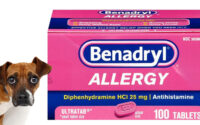Symptoms, Causes & Diagnosis Of Megaesophagus In Dogs:
What is Megaesophagus in dogs:
Table of Contents
Dog owners have often noticed their dogs experience regurgitation. Now, many people confuse regurgitation with vomiting. Although the experience and the action may look the same, the reason is completely different. Regurgitation is the action of throwing up swallowed food because of the condition called Megaesophagus. And vomiting is the action of throwing up food from the stomach.
When your dog cannot swallow food normally and regurgitates, this condition is a disorder in which the esophagus gets dilated and cannot move the food into the stomach. The esophagus is the tube-like structure that works as a pathway for your food to slide down to the stomach, but when it dilates (gets enlarged), the food is unable to move to the stomach, and your dog throws up undigested food.

Types of megaesophagus in dogs:
There are mainly two types of megaesophagus, but there is a possible third type as well;
Congenital Megaesophagus
Congenital Megaesophagus in which the animal is born with the disorder, and regurgitation occurs when the puppy starts eating solid food. There is no surgical treatment available for this kind of megaesophagus, and only some lifestyle and ways of intake of diet can help the disorder. This disorder can develop later in life, too, mostly in old or middle age, and that is known as Acquired Megaesophagus, which can be treated in different possible ways. The causes for the acquired megaesophagus are extremely long and include muscle diseases like polymyositis and another disease such as cancer, myasthenia gravis, toxins including lead and thallium, and trauma.
Although there is no surgical correction for this, it must be identified and treated as soon as possible.
Vascular Ring Anomaly
Vascular ring anomaly is the third and rare type of megaesophagus, both; congenital and secondary, caused by vascular ring anomaly. In this type of megaesophagus, the abnormal blood vessel can persist instead of regressing during development. This extra blood vessel later causes constriction as the oesophagus passes through the chest, and the oesophagus is dilated, which is why the food starts regurgitating. Vascular ring anomaly can be possibly treated with surgery.
Causes:
While some dogs are born with it, how is it caused later in life for those who weren’t?
There can be various possible reasons for this:
- The oesophagus is a long track, and there is a possibility of damage at any location between the nerves (that send a signal from the brain to do the action) and the muscles of the oesophagus.
- Some trauma in the brain may also cause this disorder.
- The presence of some tumour and large tissue also acts as a blockage for food to move into the stomach.
- Inflammation of the oesophagus itself.
How to know if your dog has megaesophagus disorder?
- Regurgitation is the most common symptom of this disorder.
- Weight loss is another sign that indicates megaesophagus, showing that even if you’ve been providing your dog with a good diet, they have been throwing up, and because of that, their nutrition is suffering.
- Most dogs gurgle when they swallow their food.
- Muscle weakness because of starvation.
- Fever may begin at some point.
- Some dogs’ lungs make abnormal sounds.
Diagnosis of esophagus problems:
- In most cases, an X-ray fairly shows the condition of the oesophagus and the megaesophagus is diagnosed there and then.
- But, sometimes, a blood test may also be performed to check the relationship between nerves and the muscles of the oesophagus.
- Endoscopy may be performed for a visualisation of the inside of the oesophagus.
Which breed of dogs can have a megaesophagus?
Although no specific breed can only have the disorder, some species have shown to be prone to the disorder much more than the rest, including German shepherd, Great Dane, Irish setter, Labrador retriever, etc.

Treatment:
Although the treatment of the megaesophagus is focused on preventing regurgitation, it varies in different cases depending on the underlying conditions of your dog.
- In most cases, a high-calorie food diet is prescribed and its desired consistency by the veteran to make the food digested and easily move to the stomach.
- A bailey chair is also often suggested so that your dog can sit in a proper position (upright) while eating, which will help make the food swallow better and the feeding easy. The upright position of the dog must also be kept for the next fifteen minutes after feeding to prevent regurgitation and allow gravity to move the food into the stomach.
- Food intake management is difficult for dogs with megaesophagus because proper caloric intake is very important to minimize regurgitation.
- In some dogs, low portions of food throughout the day help with better swallowing. It depends on whatever is working for your dog.
- In dogs whose regurgitation is frequent, a percutaneous gastrostomy tube can also be placed to bypass the oesophagus for feeding.
Is Megaesophagus Risky?
The megaesophagus can become a risk factor for your dogs’ health if the condition is left untreated or prolonged. In this case, malnutrition may occur because of starvation, and the underlying cause of aspiration pneumonia can lead to death.
In most cases, it highly depends on the owner how fast the recovery happens as this disorder requires special attention and consistent care regarding feeding.
Conclusion
If you see your dog regurgitating often, do not assume conditions yourself and do not avoid getting them examined. People often think something is wrong with the food itself and keep changing their diets and the kind of food. In the megaesophagus, no matter how tasty or healthy the food is, it depends on the oesophagus’ condition how well the swallowing is. Do not try to diagnose anything yourself, or giving any medication can lead to further complications.
In case of any symptoms, the right route towards treatment must be taken, and no home remedies should be applied. If your dog is experiencing one or more symptoms, make an appointment with your trusted veteran and get your dog examined for an early diagnosis.



